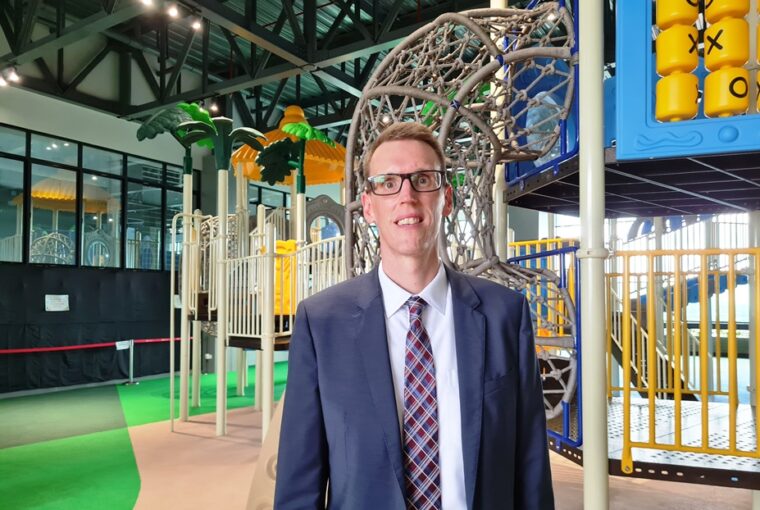Exclusive interview with Mark Thiessen, Head of School of Sekolah Pelita Harapan (SPH) Kemang Village
As the Head of School of Sekolah Pelita Harapan (SPH) Kemang Village, Mark Thiessen has been working in education for more than 15 years, many of them serving in various leadership roles within Christian international schools. He was drawn immediately to the mission and vision of SPH and the tangible way it embodies these statements by supporting redemptive Christian education throughout Indonesia.
This pursuit of mission has continued to be a driving force behind his service and desire for Kemang Village to grow in excellence. Recently, we spoke to Mark Thiessen. It was a fruitful discussion on how he came to lead at SPH Kemang Village, his goals for the school in a post-Covid era, and the future of the school plus the education system in Indonesia.
First of all, what is your educational background?
This is my fourth year as a Head of School at SPH Kemang Village. Prior to that, I was a leader in the International School in Canada, where I was born and raised, and educated. I did my undergrad and graduated from Brock University, Ontario, Canada receiving my Bachelor of Education, Bachelor of Science in Biological Sciences, and finally my Master of Education in Administration and Leadership Education in 2016.
What are your vision and mission for SPH Kemang Village?
We as a group of 5 schools have a vision and a mission which involve transforming the nation of Indonesia through holistic education. We want to equip our students to participate in, act as a restore, and redeem the nation of Indonesia to make it more prosperous moving forward.
Our desire is not necessary to do just educate kids and send them out to the parts of the world even though many of our students do go overseas for education, we want them to come back, Indonesia is their home. We want to be passionate and make sure Indonesia is the world leader in education in as many areas as possible.
Specifically for this school, I want us to be seen as a light for innovative education in South Jakarta. When parents and the communities think of what’s the best school in South Jakarta, I want the number one thought to be SPH Kemang Village.
What does it take to get there, it takes the right people. So we have incredible teachers who come from all over the world to work in our school. It takes incredible facilities, we have beautiful facilities, 20,000 sqm of the facility, and it takes the right program with a strong curriculum with strong curricular programs that help develop students to be holistically flourishing in all aspects of life. My vision and mission are to be the best school in South Jakarta and to allow students to hit the outcome they desire so that they may transform Indonesia.
What do you think about Indonesia’s education culture and its students compared to any other countries that you had worked in before?
That’s a great question. I have come to love Indonesia, I really have. The Indonesian people that I have had the privileged of working with, I see they are incredibly hard-working and incredibly industrious. They desire to be the best at what they do. I see that in the education system as well. I see Indonesian schools with a firm desire to innovate and change and grow because they want their graduates to be successful in life beyond school.
I also see Indonesia might be a little bit behind in some of those ways compared to some western countries. But their desire for growth is exemplary. I believe the Ministry of Education and Culture of Indonesia has a vision for education in Indonesia that is going to help the country get there. So I’m excited for the future of Indonesian education.
During this time of the pandemic, what does the biggest challenge?
We’re really fortunate to have a strong educational program that we could transition to online very quickly. I wasn’t too concerned about educational loss for students. We could still teach them to read and to write and to do mathematics and science while they’re at home.
The biggest concern I have for students is social-emotional concerns. Being in isolation changes the way you think, it changes the way you act and you behave. So my biggest concern is always about how we’re going to support the students in mental and emotional health, to ensure that they are healthy and part of life so it doesn’t interfere with their academics. So we’ve put specific things in the place, support structure, and we’ve changed the school calendar, and the schedule to make sure kids could live balanced life even though they are at home.
So that was our biggest concern. Now that we have approximately 90 percent of our students back in school every day, we’re seeing the fruit of that. The kids have come back and they are struggling a bit. I’d be honest with you. In a transition back to school learning, but very quickly they’re picking up what they’re left off. It would tell me the programs we put in place are successful.
You said that 90 percent of the student already taking offline classes, how about another 10% percent of the student?
The students who are not currently in school, they have access to the information in 2 different ways. Some families are receiving information in what we call a synchronized mode which means they can download the assignments, complete the assignments independently at home and submit the works to the teachers.
We also have other students who are in isolation because maybe they were a close contact with somebody who was Covid-19. Or maybe they were overseas. Maybe their family moved to Singapore during the pandemic or to Australia or to America, and those students have access to live streaming video. So they can actually see what’s going on in the classroom and engage with the teacher to get the support they need to continue their education. So that 10 percent is split between two groups, some doing with no video, some doing video based on the circumstances.
Can you share your plan for SPH Kemang Village in the near future?
Oh! That’s exciting. We are thinking in a number of different ways in terms of development. One is facilities. We have a 12-year-old building, we know we need to continue to improve. Every year we need to take steps to make sure our facilities are developing and growing to promote the flourishing of our students.
We’re also excited to be innovating in areas of educational technology and how we integrate it into our classroom, how we integrate it into our curriculum. We’re excited to be exploring areas of classroom design and classroom setup, and how to set up classrooms differently to meet the need of students.
We’re also looking at very significant academic program changes in the future. But we’re going to talk about it today, we’re going to release the information in the future, but stay tuned. SPH Kemang Village is not going to stay the same. We are constantly growing and improving.
Finally, what is your hope for the future of education in Indonesia?
My hope is that education in Indonesia fulfills the mission Nadiem Makarim (Minister of Education, Culture, Research, and Technology) has for it. He has a vision for education in Indonesia to act above western international standards. I have a similar vision. I believe the people in Indonesia are capable of having an incredibly high standard when it comes to education. Because they are innovative because they are industrious because they desire to improve and grow and flourish.
There’s a massive youth movement in Indonesia that I think in the next 10, 15, and 20 years is going to transform the education looks in this country. I believe in Indonesia will grow into the hub of world-class education in South East Asia, and be able to produce graduates to transform the world. That’s my vision for education in Indonesia. I think the people of Indonesia have a desire to do that.
I’d love to see people from overseas come here for education. And I certainly don’t want our graduates necessarily to have to go overseas to get what perceive as a high-quality education while you can get it here.





 Oct 12, 2022
Oct 12, 2022






